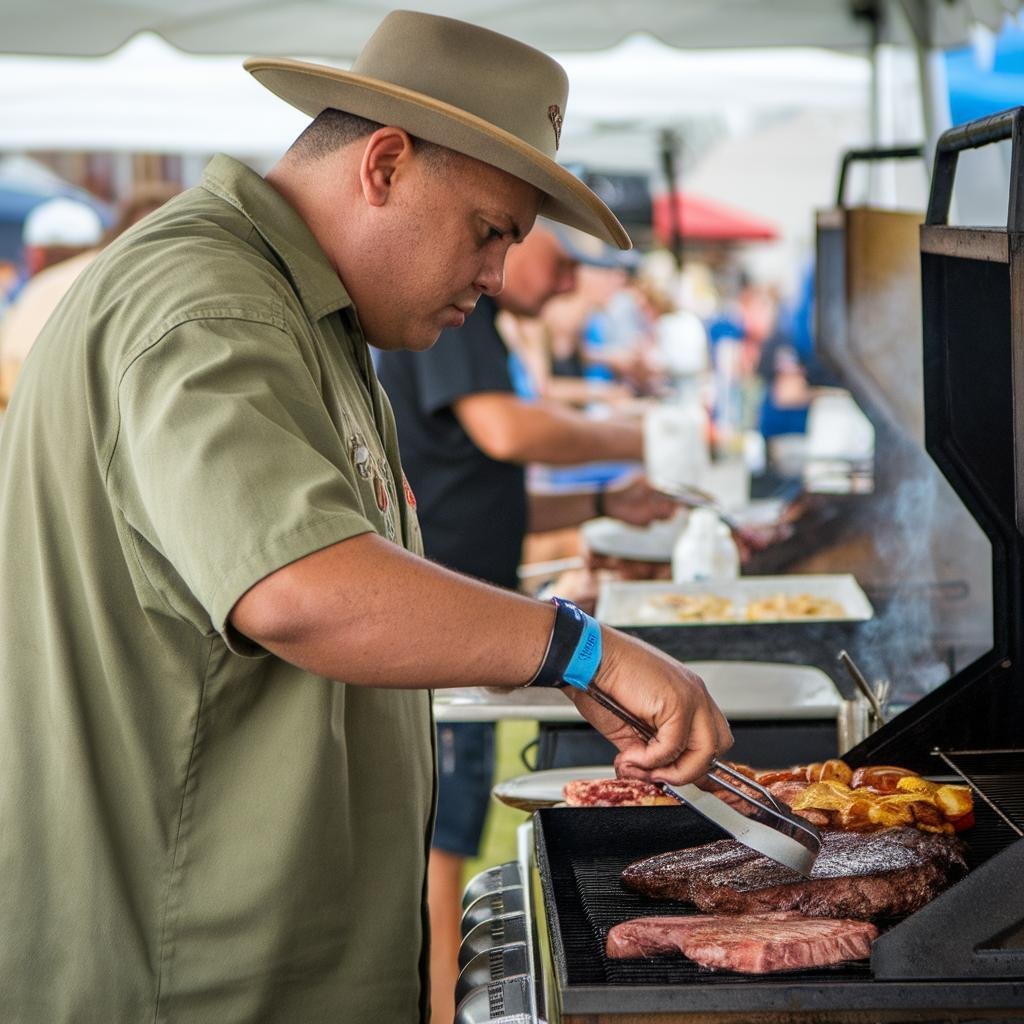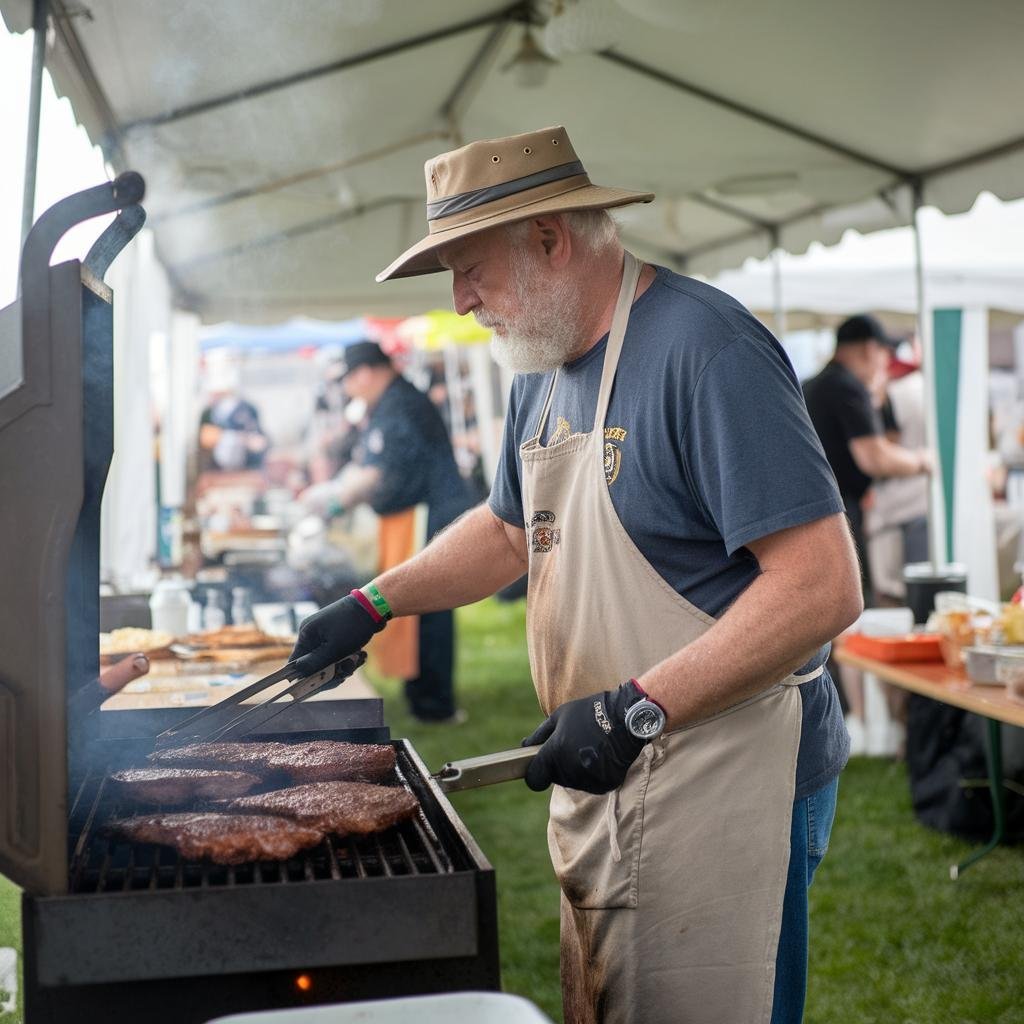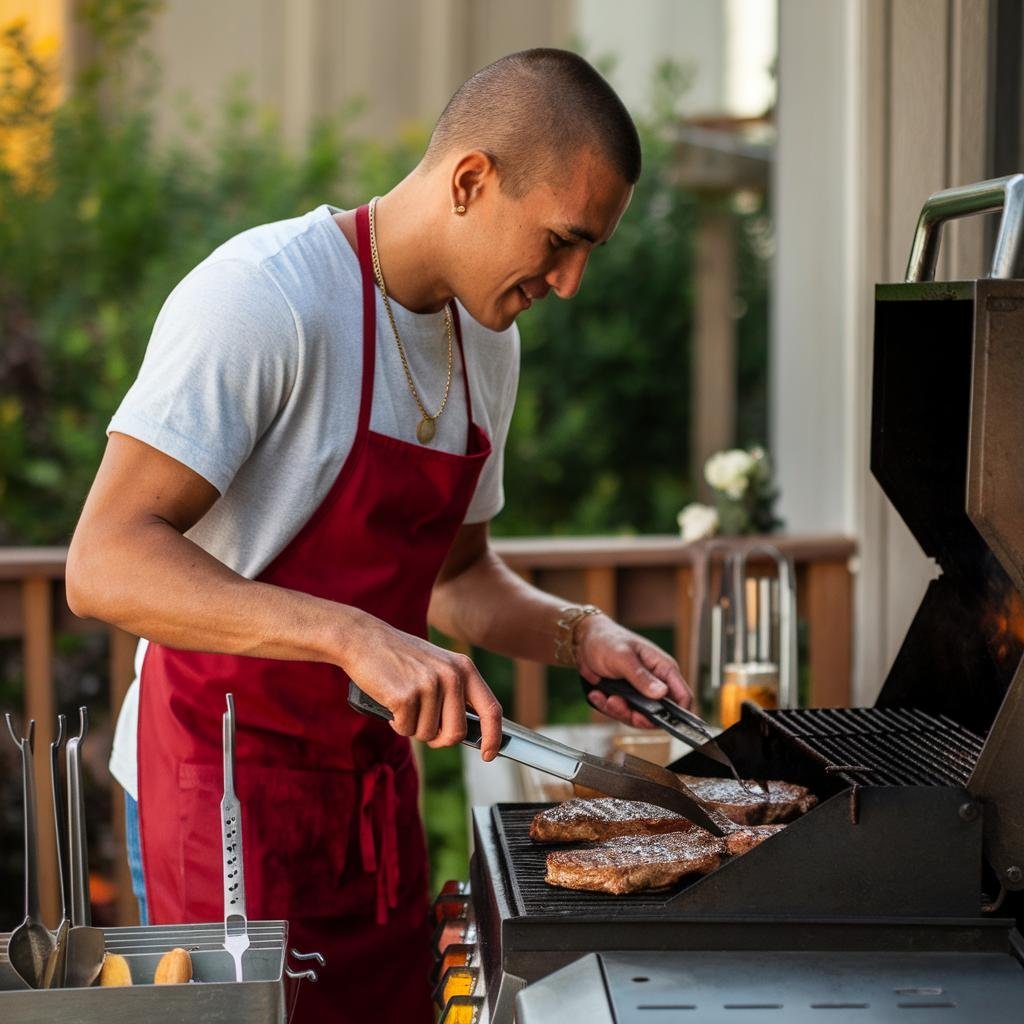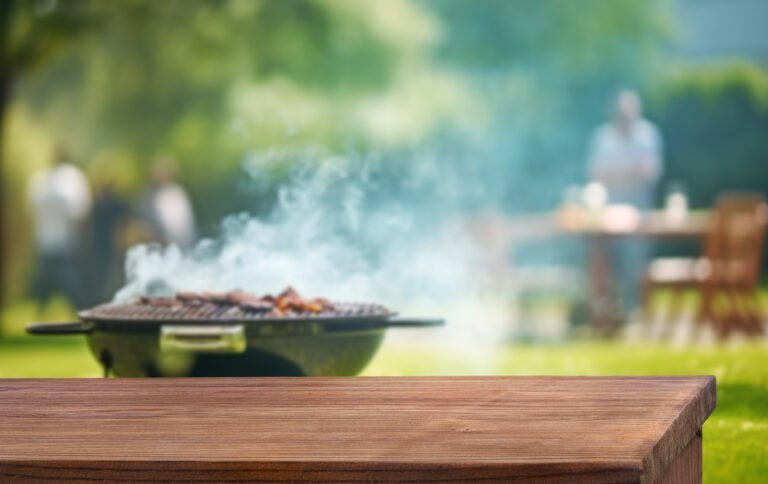Disclosure: This Post Contains Affiliate Links; We earn a commission on purchases.
When it comes to judging BBQ competition entries, experienced judges take several criteria into consideration. If you’re interested in competing and want to know what the judges are looking for, you’ve come to the right place. In this comprehensive guide, we’ll explore the BBQ competition judging criteria, so you can understand how to impress the judges and increase your chances of success.
In most BBQ competitions, such as those organized by the Kansas City Barbeque Society (KCBS), the entries are divided into four main categories: chicken, pork butt, pork ribs, and beef brisket. Each category is evaluated based on the overall appearance, taste, and tenderness of the meat.
During the judging process, entries are presented in identical styrofoam boxes, with each category being judged separately. Judges rate the entries on a scale of 1 to 9, with 9 being excellent and 1 being inedible. The team with the highest overall score is crowned the Grand Champion. With hundreds of BBQ competitions happening every year, it’s crucial for competitors to understand the judging criteria and techniques to stand out from the competition.
Key Takeaways:
- Judges evaluate BBQ competition entries based on appearance, taste, and tenderness.
- Entries are divided into various categories, such as chicken, pork butt, pork ribs, and beef brisket.
- Each category is judged separately, with the highest overall score determining the Grand Champion.
- Competitors should focus on presenting visually appealing entries and creating well-balanced flavors.
- Texture and tenderness of the meat also play a significant role in scoring.
The Importance of Appearance and Presentation
When it comes to judging BBQ competition entries, appearance and presentation are key factors that judges take into consideration. The way the food looks can greatly impact the overall impression and appeal of the dish. Judges are looking for entries that not only taste amazing but also look delicious and enticing.
When presenting their BBQ entries, competitors should pay attention to the details. Here are some important aspects that judges consider:
- Neat arrangement: The meat should be arranged neatly in the styrofoam box, with each piece placed purposefully and thoughtfully. A well-organized presentation shows the competitor’s attention to detail and care.
- Even application of sauce: If the dish includes sauce, it should be evenly applied to the meat. Judges look for an appropriate amount of sauce that complements the flavors without overpowering them.
- Appetizing color: The color of the meat is an important visual cue. Judges are drawn to meat that has an appealing color, whether it’s beautifully browned, nicely caramelized, or has a mouthwatering char.
- Creative use of garnish: Some competitions allow for the use of garnish in the presentation. Competitors can get creative and use fresh herbs, sliced lemons, or other visually appealing elements to enhance the overall appearance of the dish.
A well-presented BBQ entry should excite the judges and make them eager to taste the food. The visual appeal sets the stage for the overall experience and can give competitors an advantage in the competition.
Evaluating Taste and Flavor
Judges evaluate the taste and flavor of the BBQ entries based on their sample bites. The flavor should be pleasant and well-balanced, with a good combination of meat, smoke, and seasonings. Judges are looking for entries that have a distinct and enjoyable taste, without any taste faults such as being too salty or burned. The overall flavor should enhance the natural flavors of the meat and not overpower it. Each category may have its own specific flavor expectations, such as the taste of the sauce for chicken or the smokiness of the meat for ribs.
When judging the taste and flavor of BBQ entries, judges take into consideration the following factors:
- The balance of flavors: Judges want to experience a harmonious blend of meat, smoke, and seasonings. They look for a combination that is neither too overpowering nor underwhelming.
- The level of seasoning: The taste should be well-seasoned, but not excessively salty or spicy.
- The influence of smoke: Smoke plays a crucial role in BBQ, and judges expect to taste a pleasant smokiness that enhances the overall flavor profile.
Let’s take a closer look at some aspects of taste and flavor that judges consider:
Distinctive Taste
“The BBQ entries that stand out are the ones with a unique and memorable taste. We’re looking for something that makes us go ‘Wow!’ and sets the entry apart from the rest.”
– Judge Smith, BBQ Competition
Judges value entries that offer a distinctive taste that is memorable and leaves a lasting impression. It could be a unique spice blend, a special marinade, or a creative use of ingredients that sets the entry apart from the competition.
Flavor Balance
“Achieving a well-balanced flavor is crucial in BBQ competitions. The flavors should complement each other and create a harmonious taste experience.”
– Judge Johnson, BBQ Contest
Judges are looking for a balance of flavors in BBQ entries, where none of the elements overpower the others. The taste should be harmonious and well-rounded, allowing each ingredient to shine and contribute to the overall deliciousness of the meat.
To illustrate the importance of taste and flavor in BBQ competitions, here is a brief quote from Chef Thompson, a renowned pitmaster:
“In BBQ, taste is everything. It’s what sets good BBQ apart from great BBQ. The right balance of flavors and the perfect combination of seasonings can elevate a simple piece of meat into a culinary masterpiece.”
When preparing BBQ competition entries, it is essential to focus on creating a memorable taste and ensuring that all the flavors work together harmoniously. Excite the judges’ taste buds and leave them craving for more.
Assessing Texture and Tenderness
When it comes to judging BBQ competition entries, one cannot overlook the importance of texture and tenderness. These factors play a crucial role in determining the overall quality of the meat. Judges carefully evaluate the texture of the meat based on their sample bites, paying close attention to characteristics such as tenderness, chewiness, and moisture.
“The texture of the meat can make or break a BBQ entry. It should be tender, but not mushy or dry.”
To achieve the perfect texture, competitors need to cook the meat with precision. Each category may have its own specific texture expectations. For example, in the ribs category, judges look for a tender yet firm texture that allows the meat to cleanly separate from the bone. In the pulled pork category, judges expect a moist and succulent texture that practically melts in the mouth.
Creating the desired texture and tenderness requires skill, experience, and an understanding of the optimal cooking techniques. Competitors must master the art of cooking the meat until it reaches the perfect doneness, striking the delicate balance between tenderness and firmness.
By carefully assessing the texture and tenderness of the BBQ entries, judges ensure that only the highest quality meat is rewarded. These criteria, along with appearance, taste, and flavor, contribute to a fair and comprehensive evaluation process that determines the winners of BBQ competitions.
Conclusion
Judging BBQ competition entries is no easy task. It requires a deep understanding of the specific criteria and expectations set by the competition. Competitors must pay close attention to the appearance and presentation of their entries, ensuring they are visually appealing and well-arranged in the box. Aesthetics play a crucial role in catching the judges’ attention and making them eager to indulge.
Flavor is another key aspect that can make or break an entry. Competitors should strive to create well-balanced, pleasant flavors that enhance the natural taste of the meat. The perfect combination of meat, smoke, and seasonings can leave a lasting impression on the judges’ taste buds. It’s all about finding that harmony and avoiding any taste faults that might detract from the overall experience.
But the journey doesn’t end with appearance and flavor. Texture and tenderness are equally vital. Judges are looking for meat that is tender, moist, and easy to eat. Achieving the ideal texture requires skill and experience in cooking the meat to perfection. Whether it’s the succulent tenderness of ribs or the moistness of pulled pork, each category has its own specific expectations that competitors must meet.
By understanding these key judging criteria and meeting them consistently, competitors can greatly increase their chances of success in BBQ competitions. So, the next time you step into the competition arena, make sure to pay attention to every detail, from the visual presentation of your entry to the perfect balance of flavors and the melt-in-your-mouth texture. In the world of BBQ competitions, every little detail matters.
Source Links
- https://amazingribs.com/bbq-and-grilling-competitions/my-journey-judging-barbecue/
- https://www.bbq-brethren.com/forum/archive/index.php/t-252742.html
- https://www.thrillist.com/eat/nation/how-to-judge-competitive-barbecue

Ryan Conlon is a BBQ enthusiast and inspired chef on a journey through the smoky, savory world of outdoor cooking. Hailing from the heart of the Midwest, Ryan’s passion for grilling ignited during his early years, where family gatherings often revolved around the sizzle of the grill and the aroma of seasoned meats.







